In this post, textile artist Teresinha Roberts of Wild Colours tells us all about the top three European dye plants for use in natural dyeing: madder, woad and weld.
Woad, weld and madder are the three main European dye plants. Extracting the famous blue pigment from fresh woad leaves is a long but exciting process. Weld is an attractive plant with long flower spikes and leaves which yield an instant neon lemon yellow. The fleshy roots of madder, meanwhile, produce a brick red dye which is sensitive to temperature and to the mineral content of the water. Various shades of green can be obtained by over-dyeing woad and weld, whilst purples and browns result from over-dyeing woad and madder and it is no surprise that weld over-dyed with madder produces orange. All these natural dyes are both light and wash fast and have been in use for thousands of years.
Woad (Isatis tinctoria)
Woad is native to the Middle East and the Mediterranean from which it spread into Europe and where it has been in use as a dye plant since Neolithic times. Textiles dyed with woad were found in Viking ship burials like the Oseberg ship in Norway and the Celtic chieftains graves in Hallstatt, Austria. The famous Bayeux tapestry has several shades of blue dyed with woad.
Woad is a brassica and therefore closely related to broccoli and cabbage. In the first year, it forms a low-growing cluster of dark blue-green leaves which resemble spinach. The yellow flowers, which appear in May, have a wonderful fragrance and insects love them, whilst the black seeds are winged, resembling small tongues. A biennial plant, woad grows for two years before dying down. The leaves are harvested for dye production in the first year only, because they have little or no colour when they reach the second year. Extracting the famous blue pigment is a long but exciting process which must have looked akin to magic in the past.

Powdered woad ready for use in dyeing. Credit: Wild Colours
Weld (Reseda iuteola)
Weld is a non-invasive and attractive plant which can grow wild in waste ground, but would not look out of place in the back garden. It is a biennial of the family Resedaceae, and belongs to the same genus as the mignonette. Weld can grow up to five feet in height and the long spikes with small pale yellow flowers start appearing in early June. The flower spikes are the origin of this plant’s other name dyer’s rocket and they attract bumble bees and other insects.
Start harvesting the leaves and flower stalks from July onwards, whilst the plant is flowering but is still green. Weld dye usually produces an instant neon yellow but that depends on the chemical composition of the water used in the dye pot. If your yellow turn out dull, the addition of a pinch of calcium carbonate (chalk) can brighten up the colour dramatically.

Dried and chopped weld. Credit: Wild Colours
Madder (Rubia tinctoria)
Madder produces one of the most light-fast of natural dyes and has been in use for thousands of years. Archaeologists found traces of madder dye in linen in Tutankhamen’s tomb and in wool discovered in Viking burial grounds.
Madder is a long lived perennial of the family Rubiaceae, the same family as coffee and gardenia. The fleshy swollen madder roots produce a red dye which is sensitive to temperature and to the mineral content of the water. You need to be patient if you want to harvest your own madder, as the roots take three years to grow to a reasonable thickness. After you have waited that long, you will feel like you are digging up buried treasure. However, if you are in a hurry, using madder extract will speed up the process enormously.

Madder plant shoots. Credit: Wild Colours
Using natural dyes: what’s in it for me?
Even simply learning more about dye plants will help you better appreciate fragments of textiles in museums, as well as medieval tapestries and costumes. When you look at famous paintings you will start to notice the colours of people’s clothes and think about the dyes used to produce them.
When it comes to actually using natural dyes, recreating an ancient technique, like dyeing wool with traditional natural dyes, forges a bond between you and the artisans of the past. You will find great satisfaction in knitting and wearing a scarf dyed with woad, weld and madder, the same colours used by pharaohs, Celts, Vikings and medieval kings and queens.

The finished product: wool dyed with weld extract. Credit: Wild Colours
You can learn more about natural dyes via Teresinha’s websites Wild Colours and All About Woad, as well as reading our dedicated topic introduction here.
Teresinha Roberts is a Brazilian-born artist and sculptress specialising in the use of textiles and natural dyes. A member of the Guild of Weavers, Spinners and Dyers, she dyes fabric with woad grown on her Birmingham allotment and has a workshop at The Custard Factory in the city. She runs websites Wild Colours and All About Woad.

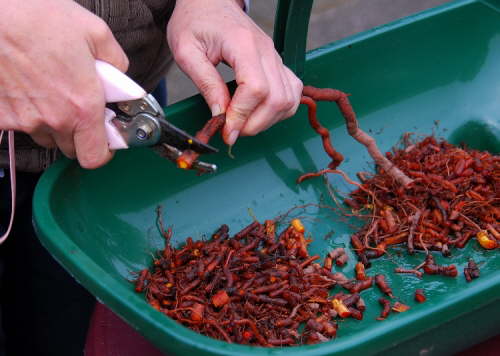

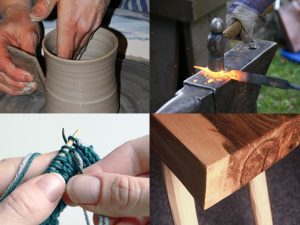
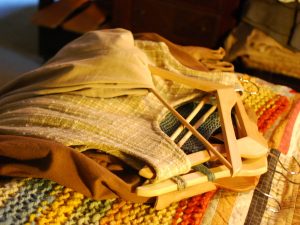
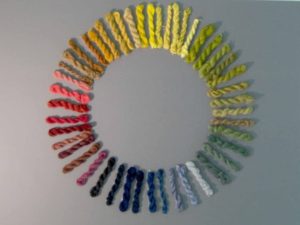
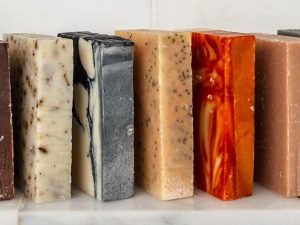
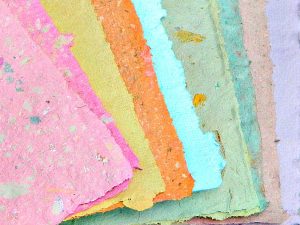
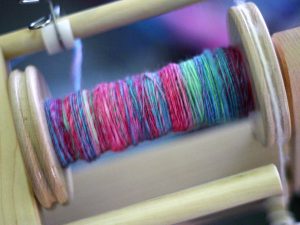
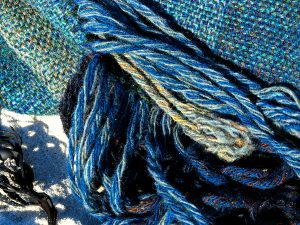
1 Comment
A brilliant (see what I did there? 🙂 ) post,and very timely for us. I can recommend the website Wild Colours too!